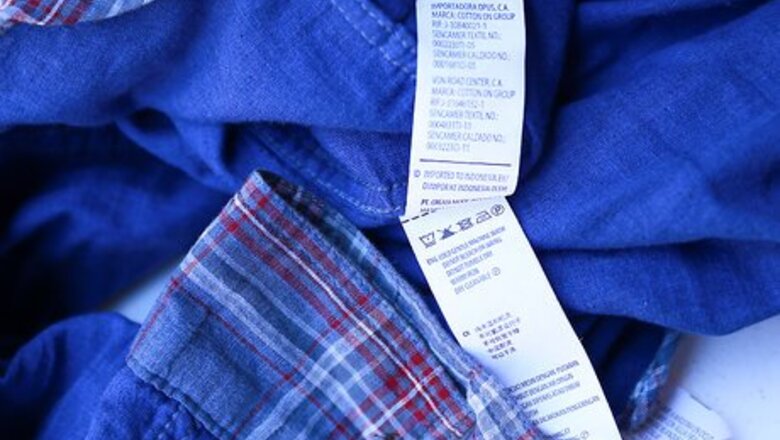
views
Separating Garments
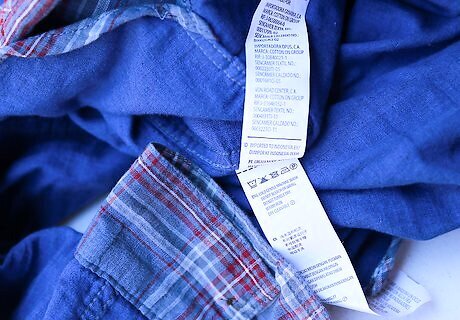
Check the tags for special washing instructions. Most clothes are machine washable, but always check the tag for further instructions. Some clothes might shrink if you use warm or hot water to wash. Some might be able to handle bleach and some might not. And some garments can't be washed in a machine, such as certain silks and delicates. Always check the label carefully. Put aside clothes that are labeled as "hand wash only" or "dry clean only". In most shirts, clothing care labels are located on the inside left side of the shirt or inside the neck area. In most pants, clothing care labels are located on the inside of the back of the pants.

Separate your laundry by "colour". Dyes in clothes, especially pieces that are new, lose their colour during a wash. The colour can bleed onto other clothes and damage your entire load. When you sort your laundry by "colour", this usually means differentiating them by shade. The most basic way to sort your clothes is to separate your darks from lights and wash them separately. You can even sort them more thoroughly by colour. Darks include colours such as blacks, greys, dark blues, dark reds, and dark purples. Lights include pastel colours like whites, pinks, yellows, light blues, light greens, and lavender. Whites include anything that's one-hundred percent white. Avoid washing whites with other light colors since they will become discolored. Jeans or dark denims especially bleed their colour and should be washed in their own separate load.

Sort your clothes by fabric weight. Additionally or alternatively, you can protect your clothes from wear and tear in the washing machine by sorting heavier fabrics from lighter weight fabrics. Most washing machines spin and toss clothes around, and the extra aggravation from heavy fabrics might ruin lightweight fabrics. As well, if you're washing a delicate or lightweight load, the cycle's settings and temperature will be different from a heavier fabric load. Delicates like lingerie, pantyhose, and washable silks should be washed separately. Heavy fabrics include items such as heavy cotton pants, bath towels, jackets, or sweaters. If you choose to sort only by fabric, you can save a lot of energy and money from having to wash multiple colour loads.
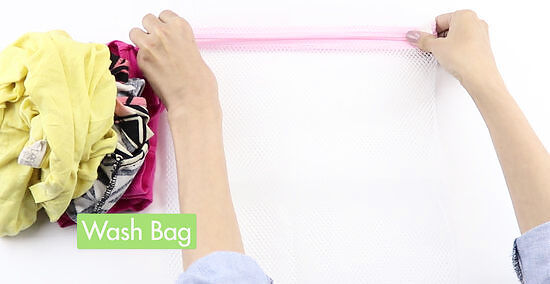
Put delicates into mesh wash bags. Instead of washing delicates separately, you can place delicates into mesh wash bags to protect them from harsh wear and tear. Mesh wash bags can come in various sizes but generally are used to protect only one or a few pieces of garments. They can be washed together with a normal load. Mesh wash bags don't protect garments from colours bleeding, so be sure to wash them with similarly coloured loads. In most cases, delicates will not bleed and would be safe to wash with a light coloured load.
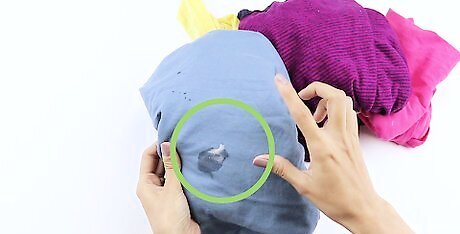
Separate out stained clothing. Some stains need special treatment before you can put the garment into the wash. The most popular stains that need pre-treatment are grease and oil stains. Avoid washing or drying stained clothing in the machine. Certain stains set when heat is added, making them difficult to remove.
Setting Up Your Washing Machine

Choose the right washing cycle. Wash cycles consist of two important speeds: a speed at which it agitates or tumbles the clothes with water, and a speed that spins the water out of the clothes. Depending on what you're washing, the wash cycle you choose should match what kind of fabric you're washing to help maximize cleanliness while also protecting your clothes. Normal Cycle: This cycle goes with a fast/fast approach -- it tumbles fast and spins fast. It helps with cleaning very dirty and sweaty clothes, and is what you will most likely use on a regular basis. Sturdy fabrics like cotton, linen, denim, towels, and bedding do quite well in a normal cycle. Permanent or Perm Press: This cycle goes with a fast/slow approach. These fabrics need fast agitation to be clean but a slow spin to prevent wrinkles. Use this cycle for synthetic fibres like rayons, knits, polyesters, and acetates. Synthetic fibres are known to pill, or create small balls of fibre and slow spin cycles help prevent pilling. Delicate Cycle: This cycle uses a slow/slow approach, reducing agitation and preventing wear and tear. However, the level of cleanliness decreases with its slow tumbling. This cycle is best used for specific or special garments like lingerie, sequinned clothing, laced or loosely woven fabrics, or items made of sheer fabrics like pantyhose. Special cycles: Newer models of washing machines have special cycles that do things such as sanitize, steam, or claim to protect whites and remove stains. Consult your machine's manual for further explanations on what each special cycle does.
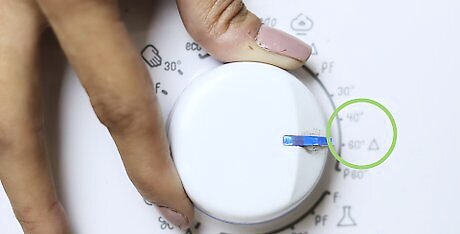
Set the water temperature. In theory, the hotter the water, the cleaner the clothes. Hot water sanitizes and kills germs better, dissolves detergents more effectively, and removes built up grime so clothes look brighter and cleaner. However, in some cases, hot water can shrink clothes, fade fabrics, set certain stains in, and can be quite expensive for your energy bill. So choose a water temperature that your fabrics can stand but also what you can afford for the best results. Use cool water in the delicate cycle for delicate items, items that have dyes that might bleed, or clothes that aren't especially dirty. Use warm water in the permanent press cycle, dark colours, and moderately dirty loads. Use hot water for bath and kitchen towels, bedding, sturdy fabrics, or any extremely dirtied items. Cold water is the most energy efficient way of washing clothes. About 90 percent of energy used in hot washing cycles is used to heat up the water. It is also the most gentlest way of washing your garments. For some machines, the water temperature is already preset according to what cycle you choose. For example, a normal cycle will most likely use hot water that is 30 °C or 40 °C (85 °F to 75 °F).
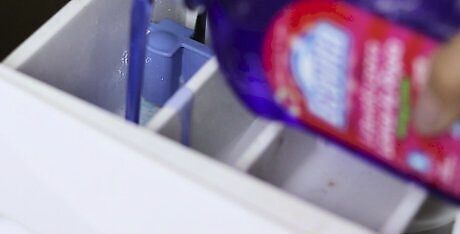
Pour in detergent and other boosters like fabric softener. It's important to read your washer's manual and find out what type of detergent your machine can handle and also where to put the detergent. Most machines these days can handle liquid and power detergents, as well as other cleaning agents like bleach. Front-loading washing machines usually have a drawer to dispense detergent and will have separate compartments to place fabric softener or bleach. Your machine will dispense the detergents at the right moment for you. Top-loading washing machines require you to pour the detergent right into the drum before you start your cycle. It's best to add your detergents before you load your clothes so the high concentration of detergent doesn't stain or damage your clothes. And in some cases, it's best to turn on the water so the detergent dissolves before you load your clothes in. The amount of detergent needed varies by brand of detergent and type of washer, so check the back of the detergent box and also look for any labels on your washing machine to find out how much to use.
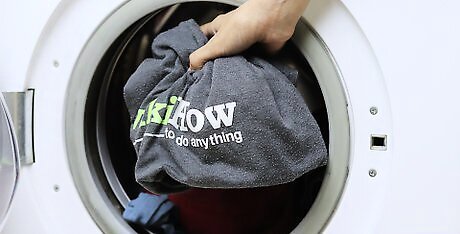
Load your washer with clothes. This is pretty simple – just dump your clothes in, but be careful not to overcrowd your clothes. You need space for your garments to move and clean themselves. Some machines may even have options to indicate whether your load is small, medium, or heavy. This option adjusts the water levels within your wash cycle according to the size of the load. Small loads fill about a third (1/3) of your machine. Medium loads fill half (1/2) of your machine. Large loads fill three fourths (3/4) of your machine.
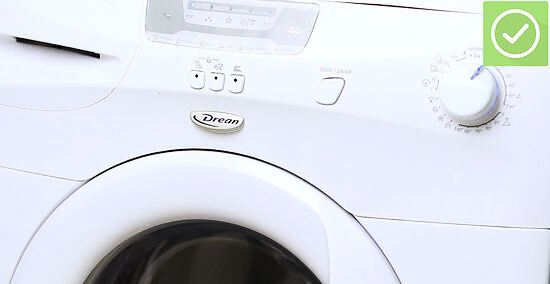
Turn on your washer. Ah, sweet success, now all you have to do is hit that on button and you're ready to go! But remember to close the door!




















Comments
0 comment